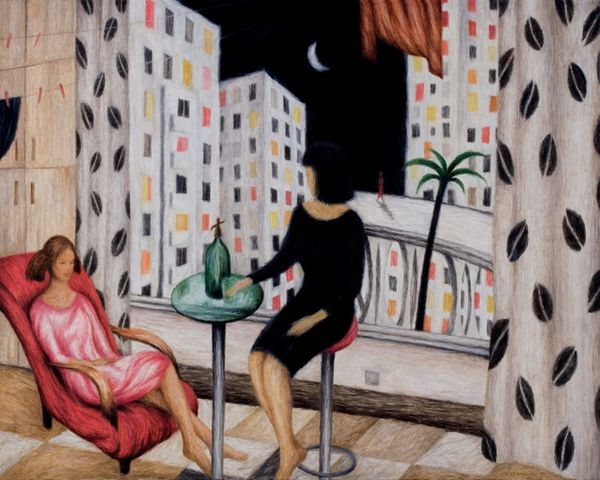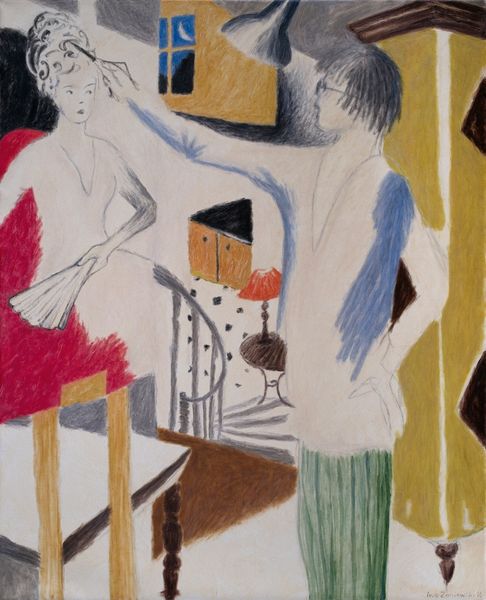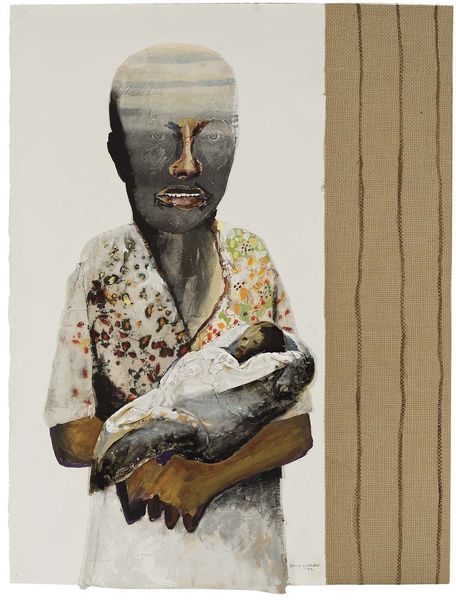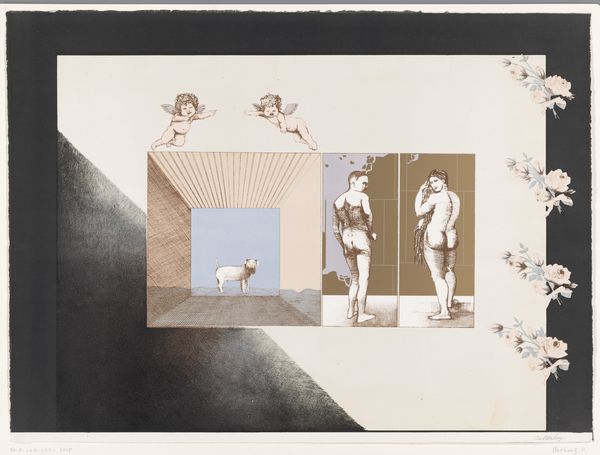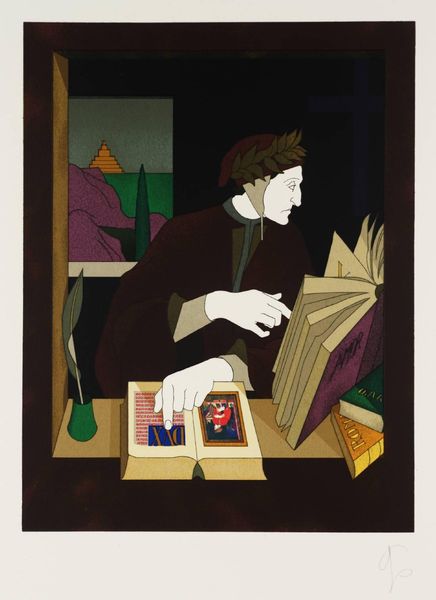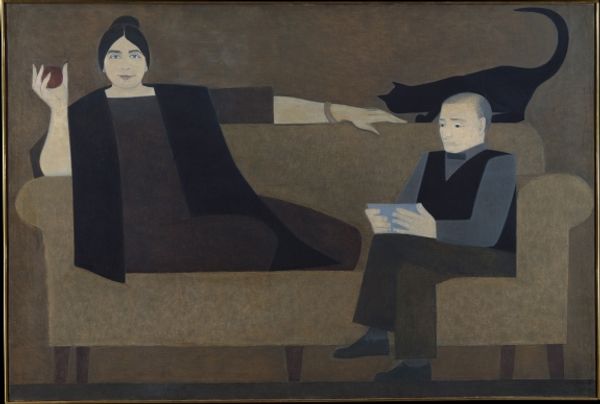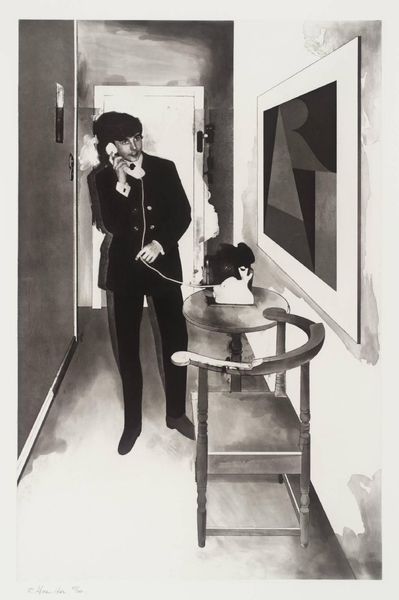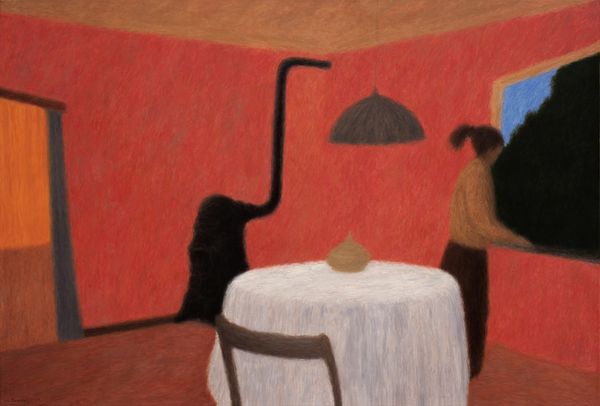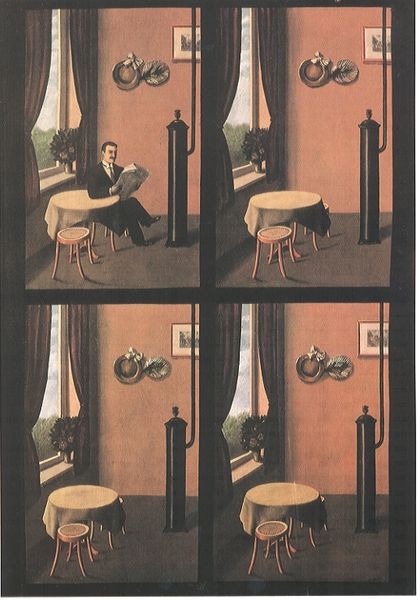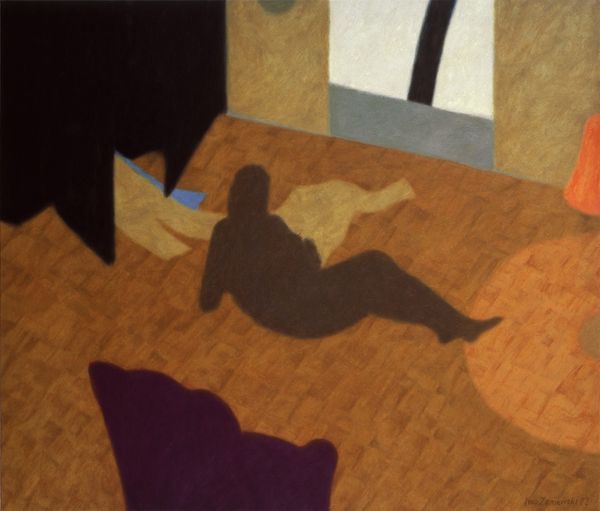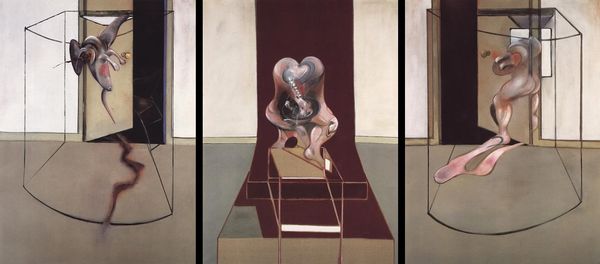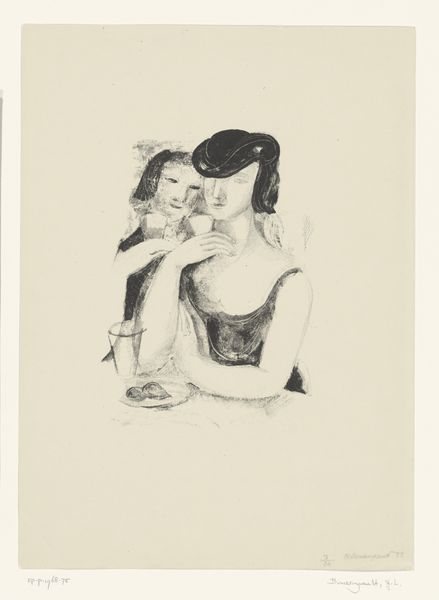
drawing, paper
#
portrait
#
drawing
#
paper
#
geometric
#
modernism
Dimensions: height 568 mm, width 770 mm
Copyright: Rijks Museum: Open Domain
Curator: Welcome to the Rijksmuseum. Here we have Aat Verhoog's "Zittende man in houten interieur," or "Sitting Man in Wooden Interior," a drawing on paper created sometime between 1965 and 1980. Editor: It gives a striking first impression—claustrophobic, even. The perspective lines really compress the figure in the chair. Curator: Indeed. Verhoog uses geometric precision to evoke a complex emotional state. Notice how the rigid lines of the wooden interior contrast with the softer contours of the figure, suggesting an internal conflict. Semiotically, one could read this as a clash between order and the individual. Editor: And what about the material choices? It's a drawing on paper, but the details within seem more like a woodcut—all those parallel lines that create the impression of wood grain. Was Verhoog, in using simple tools like paper and ink, consciously pointing to the historical connection between artisanal practice and portraiture? Is it an exploration of the value placed on high art versus craft? Curator: That is a very interesting way of perceiving it. His style definitely fits the modernism, using lines as the means of representation and not the perfect representation of objects as the goal, like portraits done with the technique of realism. Editor: And think about the work and labor involved in creating the pattern on those walls. It isn't just about aesthetics, it’s about the intense human effort that goes into creating those kinds of textures. I find myself wondering how Verhoog’s artistic background impacted these choices. Did he experiment to recreate this effect? How do these specific materials add or detract from the conceptual message? Curator: Certainly. And further, note the deliberate choice to depict the figure in contemplation, hands clasped. This compositional choice directs our focus toward the subject's internal world, made all the more compelling by the sharp spatial geometry surrounding him. It pushes beyond a simple rendering; it's a meditation on thought itself. Editor: Overall, viewing art in person is transformative and seeing how paper can become so textured through pattern and form is exciting. This work reminds me that art’s materiality carries so much historical weight that adds layers to any interpretation. Curator: Precisely. It showcases the intrinsic power of form, and our discussions open rich and fresh avenues of seeing!
Comments
No comments
Be the first to comment and join the conversation on the ultimate creative platform.
